Nose Surgery in Selangor
Search and Compare the Best Clinics and Doctors at the Lowest Prices for Nose Surgery in Selangor

Find the best clinics for Nose Surgery in Selangor
With Medijump you can browse 3 facilities offering Nose Surgery procedures in Selangor. The cheapest price available is $1,009 in Kuala Lumpur. And for the cheapest price globally, prices start from $101 in Poland.
Nose Surgery in Malaysia
Price: $ 1,009
Nose Surgery in Kuala Lumpur
Price: $ 1,009
Poland offers the best prices Worldwide
Price: $ 101
From 91 verified reviews
Zainuddin D, 07 September 2020
Great private sepcialist hospital
From 6 verified reviews
louie tan, 09 August 2018
Very attentive and friendly service, as well as able to solve my problem.
HairFaceClinic, located in Petaling Jaya, Selangor, Malaysia offers patients Nose Surgery procedures among its total of 16 available procedures, across 3 different specialties. Currently, there's no pricing information for Nose Surgery procedures at HairFaceClinic, as all prices are available on request only, whilst the national average price is approximately $1,863. There is currently a lack of information available on the specialists practicing at the Clinic, and they are not accredited by any recognized accreditations institutes
Compare Before & After Photos of _procedure_photos.phpNose Surgery
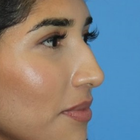
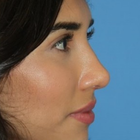
Full-side view
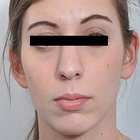

Front view
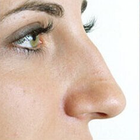
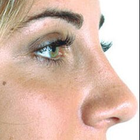
Full-side view
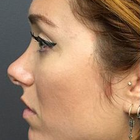
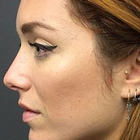
Full-side view
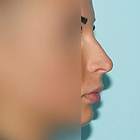
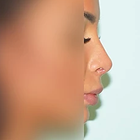
Full-side view

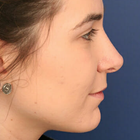
Full-side view
WHY US?
At Medijump, we're making medical easy. You can search, compare, discuss, and book your medical all in one place. We open the door to the best medical providers worldwide, saving you time and energy along the way, and it's all for FREE, no hidden fees, and no price markups guaranteed. So what are you waiting for?

Free

Best Price

Widest Selection

Risk-Free
What you need to know about Nose Surgery in Selangor
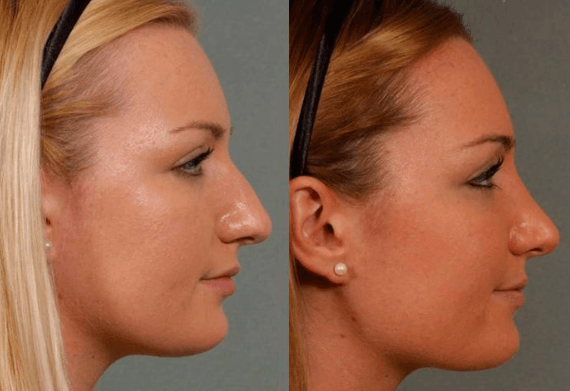
Commonly referred to as a Rhinoplasty, it is the medical term for reshaping of the nose or corrective surgery of the nose. It is one of the most common facial plastic surgeries (Facelift) procedures performed. Nose surgery can be performed to change the consequence of genetics, birth defect or nasal injury. It can be performed to enhance the appearance and/or to improve nasal breathing.
Surgery can be performed to correct nasal humps, the curvature of nose-bridge, nose tip irregularities, and asymmetry in the nostrils. The nasal appearance can be altered in various ways using intra-nasal chisels. Nose surgery procedures generally fall under three types: open rhinoplasty, closed rhinoplasty, and tip rhinoplasty. Rhinoplasty is normally performed under general anesthesia and will not leave any visible scars on the nose.
What does a Nose Surgery Procedure Involve?
Nose surgery is an individualized surgery. Before the surgery, you will need to discuss important factors with your surgeon to determine if it is suitable for you. Your surgeon will review your medical history, including your previous surgeries, medical conditions, and any medications you are taking. You will need to have a complete physical examination, such as blood tests. Your surgeon will also consider your other facial features, the skin on your nose, and what you would like to change or correct. Then, your surgeon will develop a customized plan for you. Two weeks before and after surgery, avoid any medications that contain aspirin or ibuprofen, such as Advil and Motrin IB because these medications can increase bleeding. You will need to also stop taking herbal remedies and over-the-counter supplements. If you are an active smoker, stop smoking because smoking can slow your healing process and increase the risk of getting an infection.
During the actual surgery, you will be given either local anesthesia or general anesthesia. The type of anesthesia depends on how complex the surgery is and what the surgeon would prefer to use. Then, the surgery will start by making incisions inside your nose or at the base of your nose between your nostrils. Your surgeon will reshape the inner bone and cartilage underneath your skin to make a more pleasing appearance.
There are several ways to change the shape of your nasal bones or cartilage, depending on your nose’s structure and how much needs to be removed or added. If only small changes are required, your surgeon may use cartilage taken from deeper inside your nose or your ear. However, for a much larger change, your surgeon may use cartilage from your rib, implants, or bone from other parts of your body. When the changes are finished, your surgeon will place the nose’s skin and tissue back. The incisions will be closed by stitches.
How Long Should I Stay in Selangor for a Nose Surgery Procedure?
If everything goes well, you can go back to your hotel on the same day once the effects of anesthesia wear off. However, you will need to stay in a recovery room for a few hours so the staff can monitor you. Some people may need to stay in hospital overnight. After you are discharged from the hospital, you will need to stay in Selangor for at least 10 to 14 days for initial recovery, follow-up checkups, and for the stitches to be removed.
What's the Recovery Time for Nose Surgery Procedures in Selangor?
The recovery period for nose surgery can be different from person to person. In general, 2 to 3 weeks is needed until you can get back to your full normal routine and 3 to 6 weeks until you can do any strenuous activity. However, you should be able to go back to work within a week, except if your job requires strenuous physical activity. You will feel gradually better each day in the first week. You will experience swelling, which can take six months to subside. The only people who will notice the swelling is you and your surgeon. Your final nose shape will be apparent after it is completely healed.
What sort of Aftercare is Required for Nose Surgery Procedures in Selangor?
After the surgery, you may need to wear a nasal splint for the first week. The splint is used to protect and support your nose. Your nose may be congested due to swelling or from the nasal splint. You need to rest in bed with your head raised higher than your chest to reduce bleeding and swelling. For a few days after the surgery, you may also experience slight bleeding and drainage of mucus. Your surgeon may place a “drip pad” under your nose to absorb drainage.
Your surgeon may ask you to avoid strenuous activity, take baths instead of showers, avoid blowing your nose, eat high-fiber foods to avoid constipation, not to do any facial expressions (smiling or laughing), not wearing pull clothing and wear button-downs instead.
For at least several weeks after the surgery, do not rest eyeglasses or sunglasses on your nose to prevent pressure. You should also wear SPF 30 sunscreen when you are outside because too much sun can cause permanent irregular discoloration to your nose. Do not put anything such as ice or cold packs on your nose even though it is swelling as the swelling will go away faster by limiting your dietary sodium.
What's the Success Rate of Nose Surgery Procedures in Selangor?
Nose surgery is known to have around 80% to 90% success rate. Nevertheless, just like any other surgery, it still has possible risks and complications. These risks are bleeding, infection, numbness, permanent nerve damage, and an adverse reaction to the anesthesia. You should call your surgeon immediately if you suspect any of the symptoms. Other possible risks are difficulty breathing through your nose, uneven-looking nose, persisting pain, swelling, and discoloration, scarring, septal perforation, and the need for a second or third surgery.
For an in-depth analysis of the closed rhinoplasty procedure with before and after images, watch this short video.
Are there Alternatives to Nose Surgery Procedures in Selangor?
If you do not want to undergo surgery, or if it is not suitable for you, you can get filler injections, such as Botox, Juvaderm, and Restylane. They can change the shape of your nose and only require a short visit to the doctor. This method is not painful and needs no incisions or stitches.
Whilst the information presented here has been accurately sourced and verified by a medical professional for its accuracy, it is still advised to consult with your doctor before pursuing a medical treatment at one of the listed medical providers
No Time?
Tell us what you're looking for and we'll reachout to the top clinics all at once
Enquire Now

Popular Procedures in Selangor
Prices Start From $404

Prices Start From $111

Prices Start From $70

Prices Start From $220

Prices Start From $1,945

Prices Start From $192

Prices Start From $500

Recommended Medical Centers in Selangor for Nose Surgery

- Interpreter services
- Translation service
- Religious facilities
- Medical records transfer
- Medical travel insurance
- Health insurance coordination
- TV in the room
- Safe in the room
- Phone in the room
- Private rooms for patients available

- Interpreter services
- Translation service
- Religious facilities
- Medical records transfer
- Medical travel insurance
- Health insurance coordination
- TV in the room
- Safe in the room
- Phone in the room
- Private rooms for patients available

- Interpreter services
- Translation service
- Religious facilities
- Medical records transfer
- Medical travel insurance
- Health insurance coordination
- TV in the room
- Safe in the room
- Phone in the room
- Private rooms for patients available

- Interpreter services
- Translation service
- Religious facilities
- Medical records transfer
- Medical travel insurance
- Health insurance coordination
- TV in the room
- Safe in the room
- Phone in the room
- Private rooms for patients available

- Interpreter services
- Translation service
- Religious facilities
- Medical records transfer
- Medical travel insurance
- Health insurance coordination
- TV in the room
- Safe in the room
- Phone in the room
- Private rooms for patients available

- Interpreter services
- Translation service
- Religious facilities
- Medical records transfer
- Medical travel insurance
- Health insurance coordination
- TV in the room
- Safe in the room
- Phone in the room
- Private rooms for patients available

- Interpreter services
- Translation service
- Religious facilities
- Medical records transfer
- Medical travel insurance
- Health insurance coordination
- TV in the room
- Safe in the room
- Phone in the room
- Private rooms for patients available

- Interpreter services
- Translation service
- Religious facilities
- Medical records transfer
- Medical travel insurance
- Health insurance coordination
- TV in the room
- Safe in the room
- Phone in the room
- Private rooms for patients available

- Interpreter services
- Translation service
- Religious facilities
- Medical records transfer
- Medical travel insurance
- Health insurance coordination
- TV in the room
- Safe in the room
- Phone in the room
- Private rooms for patients available

- Interpreter services
- Translation service
- Religious facilities
- Medical records transfer
- Medical travel insurance
- Health insurance coordination
- TV in the room
- Safe in the room
- Phone in the room
- Private rooms for patients available
Nose Surgery in and around Selangor
About Selangor
Occupying the status of both the most populous and developed state, Selangor is indeed the pride of Malaysia. Its advanced infrastructure and superior living standards, coupled with the country's lowest instance of poverty, make it stand out. Perfectly positioned on the western coast of Peninsular Malaysia, it envelops Kuala Lumpur and Putrajaya, both of which were formerly a part of Selangor. Despite its impressive development marked by towering structures,
Selangor manages to retain its natural charm boasting splendid landscapes and tranquil retreats. The state's deep-rooted cultural essence and unmatched healthcare services further enhance its appeal.
Selangor is the medical tourists’ favorite destination because of its geographical position and low cost of living. The state has some of the best medical experts with 12 government hospitals and over 30 private hospitals and medical centers, many of which are recognized internationally and accredited by Joined Commission International and the Malaysia Society for Quality in Health (MSQH).
Selangor has become a preferred destination for medical tourists who seek procedures such as dental surgeries, cosmetic surgeries, IVF treatments, and eye surgeries. Among the numerous hospitals offering these procedures, KPJ Ampang Puteri and Sunfert International Fertility Centre have gained immense popularity due to their high standards and patient-centric approach. This underlines Selangor's standing as a leading destination for healthcare in the region.
Popular Areas in Selangor
Tourists who want to indulge in Selangor’s beautiful nature can go to Kuala Selangor Beach (Mirror of the Sky), Chilling Waterfalls, Kuala Selangor Nature Park, or the National Zoo of Malaysia. Those who want to experience culture can visit Galeri Diraja Sultan Abdul Aziz, Mah Meri Cultural Village, and Sultan Alam Shah Muzeum.
Among Selangor's numerous tourist magnets, Batu Caves stands out. This impressive limestone hill is home to three large caves and multiple smaller ones. Revered as a national treasure of Malaysia, Batu Caves hold immense religious significance for the Hindu community.
Visitors are always in awe of the world's tallest statue of the Hindu deity, Murugan, situated here. In addition to the religious and natural appeal, the site also offers sights of varied cave fauna and thrilling climbing routes, delivering an all-round enriching experience.
The state’s capital, Shah Alam, also has plenty to offer. Tourists can go to I-City to see millions of LED lights, indoor park, or to shop. The Blue Mosque (Sultan Salahuddin Abdul Aziz Shah Mosque) is also a popular destination where tourists can see the beautiful mix of Islamic and Malay architecture.
Weather and Climate in Selangor
Adorned with a tropical rainforest climate, Selangor is characterized by a warm and humid environment all year round. Daytime temperatures generally fluctuate between 25 - 35°C, but during the dry season, these can peak at a scorching 37°C.
The wet season ushers into the region as the calendar transitions into April, often extending as far as October, leaving the land generously watered. An increased intensity of rains is observed towards September and October, marking the peak of the rainy spell. For prospective visitors seeking to avoid the wet season, the months from late November to February typically prove the most comfortable for exploring and sightseeing, blessed with less rainfall and mild temperatures.
However, it should be remembered that even amidst the monsoon season, the weather isn't uniformly gloomy; there are often luminous intermissions. The sun tends to break through the rain-soaked clouds, bathing the land in its warm rays. Consequently, even during the monsoons, numerous days are well-lit, and visitors have ample opportunities to explore the local beauty undeterred. Brazil, in every season, has its unique appeal. Whether it's soaked in rain or draped in warm sunshine, it never fails to mesmerize its guests.
Getting Around in Selangor
There are two main airports: Kuala Lumpur International Airport (KLIA) and Subang Airport. Kuala Lumpur International Airport is the main airport in Malaysia that has a multitude of routes across the globe. The airport is divided into two parts, KLIA that mostly serves large airlines, and KLIA 2 that focuses on serving low-cost carries. Subang Airport is the hub for FireFly and Malindo Air.
Navigating Selangor is made effortless by its well-established infrastructure. The primary means of transportation include taxis, trains, and buses. Taxis, while economical, can prove to be slightly tricky, as some drivers refrain from using the fare meter. Visitors are therefore advised to approach taxi counters to secure a fixed-rate coupon, ensuring they aren't subjected to inflated prices.
Public transit systems like the KTM Komuter Train, MRT, and LRT are widely recognized as the most efficient modes of transportation for traversing Selangor. However, it's important to note that these service networks may not extend to certain rural areas. When visiting these less accessible regions, tourists may find it beneficial to hire a car, thereby gaining the advantage of flexibility. Alternatively, the option of using bus services provides a more economical solution for easy mobility.
Tourist Visas in Selangor
Nationals hailing from countries like China, India, Myanmar, Sri Lanka, Nepal, Bangladesh, Pakistan, Bhutan, Serbia, and Montenegro are required to secure a visa prior to their arrival in Malaysia. Meanwhile, most other nationalities are offered the convenience of visa-free entry, valid for either a 30-day or 90-day stay. It is crucial for all visitors, regardless of their country of origin, to hold a passport that remains valid for at least six months subsequent to their entry into Malaysia.
An online visa application platform or eVisa is available for selected foreign nationals. eVisa can be applied around the world except for Malaysia and Singapore. Tourists who wish to visit Malaysia for medical treatment can apply for an eVisa Medical, valid for a single journey with a maximum of 30 days. The Malaysian Government has a very strict visa regulation, overstaying will result in RM10.000 fine and/or 5 year’s imprisonment, do ensure to extend your tourist visa if you need to.
Additional Information
- Local Currency: Malaysian Ringgit is the local currency with 1USD equivalent to RM4.72. The currency is printed in various colors and sizes, making it easier and less confusing for travelers to work with the currency to avoid giving the wrong bills when shopping. The Malaysian Ringgit is formerly known as ‘Malaysian Dollar,’ older Malaysians sometimes refer to it as ‘Dollars,’ you can ask which dollar they mean if you are unsure.
- Money & Payments: ATMs are widely available in the state. Credit cards (MasterCard and Visa) are accepted in most hotels and established restaurants. Tipping is not a common culture and many restaurants already add a service charge onto the bills, but tourists may tip.
- Local Language: The national language is Malay, but English is in extensive use since many locals can speak English. Tamil, Mandarin, and Cantonese are also widely spoken.
- Local Culture and Religion: Many people from different ethnicity coexist in Selangor. Malay, Chinese, and Indians are among the biggest ones. The official religion is Islam, as in other parts of Malaysia; with 57.9% percent of the population is Muslim, followed by Buddhist, Hindu, Christian, and Taoism.
- Public Holiday: The rich racial diversity in Selangor is greatly celebrated all year round, especially on the holy days of every religion such as Aidilfitri, Chinese New Year, Thaipusam, and Deepavali. Selangor also hosts the three-day Thaipusam festival around January or early February, when hundreds of thousands of pilgrims meet at Batu Caves.
Popular Searches
- Plastic Surgery in Thailand
- Dental Implants in Thailand
- Hair Transplant in Thailand
- Breast Augmentation Thailand
- Gastric Sleeve in Thailand
- Gender Reassignment Surgery in Thailand
- Laser Hair Removal in Bangkok
- Botox in Bangkok
- Dermatology in Bangkok
- Breast Augmentation in Bangkok
- Coolsculpting in Bangkok
- Veneers in Turkey
- Hair Transplant in Turkey
- Rhinoplasty in Turkey
- Stem Cell Therapy in Mexico
- Rhinoplasty in Mexico
- Liposuction in Mexico
- Coolsculpting in Tijuana
- Rhinoplasty in Korea
- Scar Removal in Korea
- Gastric Sleeve in Turkey
- Bone Marrow Transplant in India
- Invisalign in Malaysia
- Plastic Surgery in the Dominican Republic
- Tummy Tuck in the Dominican Republic
- Plastic and Cosmetic Surgery in Poland
- Rhinoplasty in Poland
- Hair Implant in Poland
- Dental Implants in Poland
- IVF in Turkey


